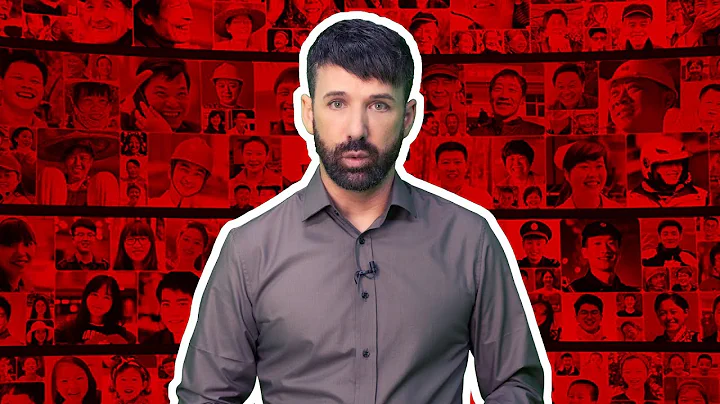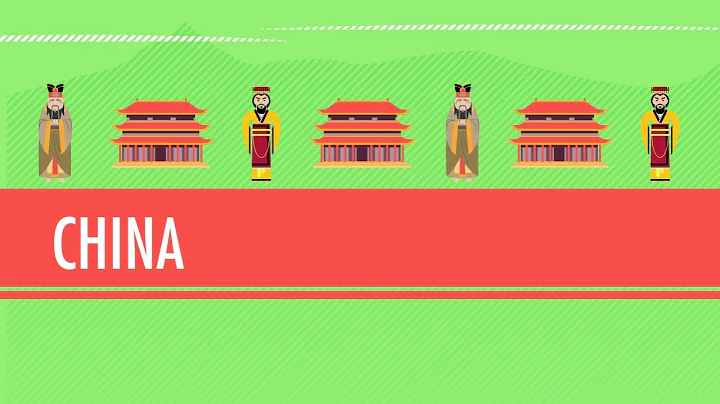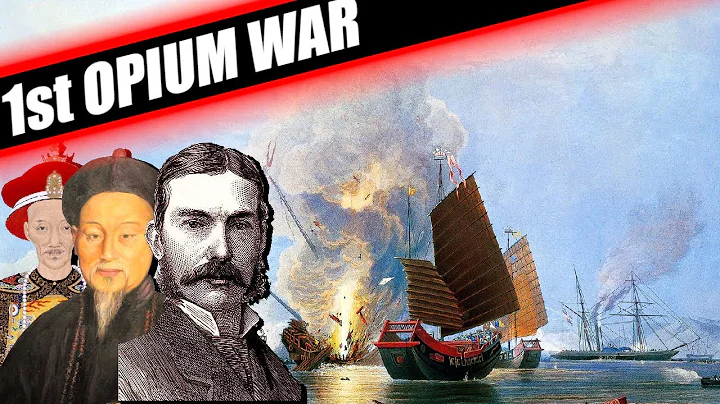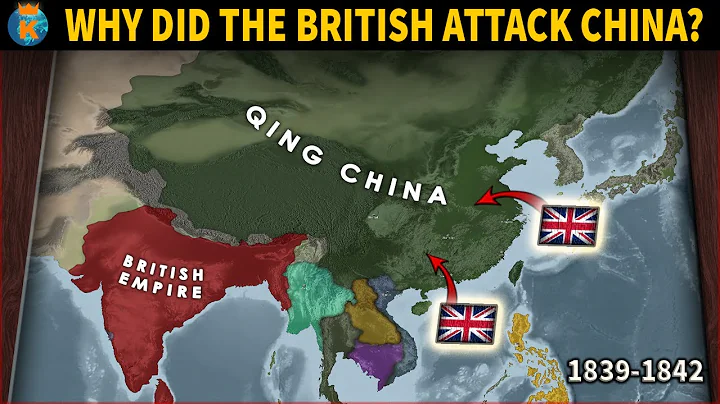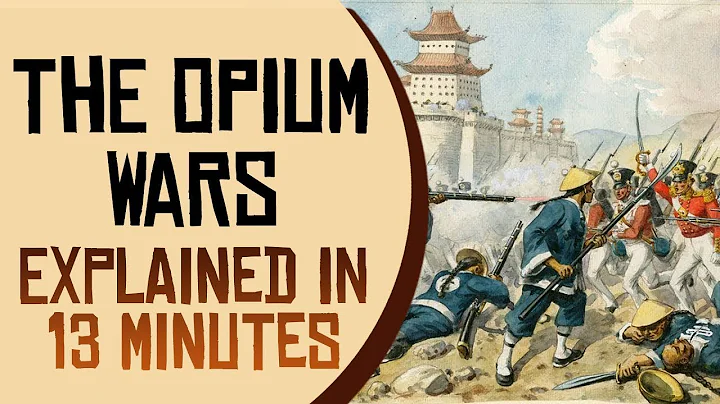
During the Qing Dynasty, there were many ethnic groups in China, the Han people were still the largest ethnic group in China. The Manchus are ethnic minorities, but they were the dominant ethnic group at the time. In addition, there are many ethnic minorities who have played various roles in history. Among them are Mongolian, Tibetan, Yi, Hui, Uyghur, Ewenki, Daur, Oroqen, etc.
Mongolia was incorporated into the Qing Dynasty

Desert South Mongolia started from today's Jilin in the east, to Helan Mountain in the west, the Great Wall in the south, and the desert in the north. After the Jin Dynasty, actively won over the heads of various tribes in Monan Mongolia by conferring official promotions, retaining privileges, generous marriages, etc., and took advantage of the conflicts between the feudal lords of various tribes and the Chahar minister Lin Danhan who supported the Ming Dynasty , to induce They come to their own side.
In the seventh year of Chongzhen in the Ming Dynasty (34 AD), Lin Dan Khan was defeated by Hou Jin, traveled westward, and died in Dacaotan. Monan Mongolia then returned to Hou Jin. Chongzhen 9th year (36), the 49 feudal lords of the 16 tribes in Monan Mongolia gathered in Shengjing (today's Shenyang, Liaoning), respected Huang Taiji as Bokeda Chechen Khan, and worshiped him as the co-lord. After the Jin Dynasty, the country was reformed. The number is Qing. At the same time, the three Mongolian Khans of Mobei and Khalkha each paid tribute to Qingtong and maintained a harmonious relationship.

In the twenty-seventh year of the reign of Emperor Kangxi of the Qing Dynasty (88 AD), Galdan, the leader of the Erut Mongolian Junggar tribe, took advantage of the civil strife in Khalkha and attacked various tribes in Khalkha. He defeated Shetu Khan Chahu Dorji and plundered Chechen Khan As well as the pastureland of Zasak Tuhan, the feudal lord of Khalkha Mongolia led his people southward to surrender to the Qing Dynasty. In the 30th year of Emperor Kangxi's reign (91), a Dolonoer Conference was held to reward the princes of Khalkha and set up banners and assistants. From then on, Khalkha Mongolia also belonged to the Qing emperor. In the third year of Yongzheng's reign (1725), the Tuxie Tuhan tribe was divided into the western region and the Sanyin Nuoyan tribe was established, thus forming four tribes.
The incorporation of the four Erut Mongolian tribes into the Qing Dynasty was carried out in different ways at different times and under different circumstances. Heshuote tribe originally lived in the area of present-day Urumqi. In the first half of the 17th century, under the leadership of their leader Gushi Khan, they invaded Qinghai and Tibet and maintained a harmonious and tribute relationship with the Qing Dynasty. In the 10th year of Shunzhi (53) Gushi Khan was named Zunyi Xingyi Minhui Gushi Khan by the Qing Dynasty. In the thirty-sixth year of Kangxi's reign (97), Dashbatur, the son of Gushi Khan, accepted the Qing Dynasty's appeasement and merged Qinghai and Shuote Mongolia into the Qing Dynasty.

During the reign of its leader Galdan, the Junggar tribe merged with surrounding tribes and became powerful. In the twenty-seventh year of Kangxi's reign (88), he invaded Khalkha. In the twenty-ninth year of Kangxi's reign, he invaded the Monan Ujimqin territory and was defeated by the Qing army at Ulanbutong. In the thirty-fifth year of the reign of Emperor Kangxi, he was defeated by the Qing army again at Zhaomo. many. Galdan's nephew, Cewang Alabutan, took the opportunity to establish himself as a Khan and sent money to Qingna. Galdan was attacked from both sides and committed suicide by taking poison the next year. In the fifth year of Yongzheng's reign (1727), after Cewang's son Galdan Celing succeeded to the throne, he repeatedly disturbed the Qing Dynasty. In the ninth year of Yongzheng's reign, he defeated the Qing army in Hetongnaoer. The following year, the Qing army was defeated by Erdenizhao. Later, they stopped their troops and negotiated peace. After the death of Gardan Celing in the tenth year of Qianlong (1745), there was internal strife in the Junggar tribe. In the 18th year of Qianlong's reign (1753), Dawaqi seized the throne of Khan, and in the 20th year of Qianlong's reign, the Qing Dynasty was pacified. Soon, Amursana , who had surrendered before, rebelled against the Qing Dynasty again. After the failure, he fled into Russia. He died of illness in the 22nd year of Qianlong's reign. The Junggar tribe, which had been in conflict with the Qing Dynasty for a long time, became subordinate to the Qing Dynasty.

At the time of the internal strife in the Junggar Ministry, Dulbert's Taiji Cheling, Cheling Ubashi, and Cheling Mengke (historically known as 三CHEling) got rid of the fetters of Junggar in the 18th year of Qianlong's reign. , led the crowd to submit to the Qing Dynasty, and was placed as a nomad in the Uliasutai area of . The following year, the flags were organized and alliances were established.
The Torgut tribe were originally nomadic in the Yar area near Talbahatai. In the late Ming and early Qing dynasties, due to the intrusion of the Junggar tribe, they moved westward to the lower reaches of the Ejil River (today's Volga River). In the 26th year of Qianlong's reign, Wobasi succeeded to the throne. Unable to endure the enslavement, intrusion and expropriation of the Tsarist Russian government, in the 35th year of Qianlong's reign, he led more than 33,000 households and 170,000 people to return eastward to his motherland. .Arrive in Ili the following year, attached to the Qing Dynasty, divided into two parts: the old and new Turhut tribes in the Wobasi territory, nomadic in Zhuledus, Kubukharawusu and other places; the new Turhut tribe in the Saleng territory Special Department, stationed in the Kobdo area.

At this point, Monan, Mobei, and Mongolia areas all belonged to the Qing Dynasty. League Flag System The League Flag System was implemented during the process of subduing all Mongolian ministries from the ninth year of Tianming (24) to the thirty-sixth year of Qianlong (1771). It was based on the organizational principles of the Eight Banners system and on the basis of Mongolia's original social system. gradually built up. The Qing government abolished the original division of Mongolia into tribes and reorganized them into flags. A few were organized into one banner, and most were divided into several banners, or even more than ten banners. The banner is not only a military and administrative unit, but also a hereditary territory granted by the Qing Dynasty to the Mongolian feudal lords at all levels within the banner.
The flags in Mongolia are divided into two types: the General Banner and the Zasak Banner. The general banner has a general manager, who is directly governed by generals, governors, and ministers dispatched by the central government, including the eight internal Chahar banners, the two naturalized Tumote wings, and the Erut banner under the jurisdiction of the Jehol metropolis, There are one banner each for Ming Azhen and Zhaha Qin under the jurisdiction of the Minister of Counselor Khovd , nine banners for Altai and Altai Nor Ulianghai, five banners for Tangnu Ulianghai for the deputy general of Dingbian Zuo, and Da Da for the minister of residence in Tibet. Wooden Mongolian Eight Banners, etc.

Most of the remaining Mongolian flags are called Zasak Banners. The Qing government established Zasak Banners in these areas under the supervision of the central government. The Zasak Banner is divided into Inner Zasak and Outer Zasak. The banners of Inner Mongolia are called Inner Zasak; the banners of Khalkha Mongolia and Erut Mongolia are called Outer Zasak. The meritorious princes of Inner Mongolia were appointed by the Qing government as zasak to manage the flag affairs. Zasak's responsibilities were to handle administrative, judicial, taxation, scientific and technical personnel, appointment of banner officials, pasture adjustment and other matters within the banner in accordance with the authority granted by the Qing government, and were supervised by superiors. Under Zasak, there are staff members such as Assistant Manager Taiji, Guanqi Zhangjing, Melun, Bi Tieshi, etc. to assist in the management of flag affairs.
's auxiliary is a basic military unit. Each auxiliary has one leader and 150 bannermen under its jurisdiction. Under the leadership of Banner Zasak, they review the banners, collect taxes, resolve disputes, deliver letters and levy personnel.伕. There is a riding school and a collar reminder under the assistant leader to assist the assistant leader in handling military and political affairs. Every six assistants will be assigned a senior officer to take charge. Under the assistant, every ten households have a chief, who is the manager of the lowest level administrative unit.

In addition to the General Banner and the Zasak Banner, the Qing government also built a total of seven Lama Banners in the territory of the large temple. These Lama Banners are parallel to the Zasak Banner and are not subject to interference by them. They manage the administrative, judicial, and taxation matters within their territories on their own.
In order to prevent the flag Zhasak from enjoying independent power, the rulers of the Qing Dynasty established the alliance system, setting up alliances on the flags and combining several flags. Some alliances are established on the basis of original ministries, some alliances include several ministries, some alliances only include one banner, and there are also a few banners that do not have alliances on them, but are directly under the jurisdiction of generals, ministers, etc. The old Mongolian ministries were only preserved in name and did not have any administrative functions. The location of the alliance was designated by the Qing government, usually at a suitable location convenient for each banner to gather. Once determined, the name of the place was used as the name of the alliance.

Each alliance has a leader and a deputy leader, who are appointed and photographed by the Lifan Yuan from the Zasak of each banner in the alliance to the Qing Emperor. The League is not a first-level administrative agency, but an organization that implements supervision. Generally, it does not have an office to handle League affairs. It is stipulated that the alliance will meet once every three years, at which time it will carry out its duties such as bidding, training troops, inspecting finances, and sorting out civil and criminal cases. The alliance does not constitute the highest level administrative organization in Mongolia. The main task of the alliance leader is to serve as the convenor of the alliance. He cannot directly interfere in the internal affairs of each banner, nor has he the authority to issue decrees without authorization. He only plays a supervisory role in the Zasak of each banner. , and acted as an intermediary between Banner Zasak and the Qing government. In case of civil and criminal cases that cannot be resolved by the banners of Zasak, they can be tried jointly. If Zasak has any illegal or rebellious behavior, he has the responsibility to report it at any time. In time of war, he will lead the soldiers of his banners to go out in response to the imperial edict.
The Mongolian alliance banner is not an independent political system. It is directly under the control and control of the central government and performs the duties entrusted by the Qing court. It does not have the power to independently handle various affairs of the alliance banner. On the alliance flag, the highest adjudication power on all major military and political matters belongs to the Lifan Yuan, while major local events are reported to the generals, governors and ministers of the relevant regions for handling.

Social Classes The various systems established by the Qing Dynasty did not change the class structure and exploitation relations of Mongolian society. Feudal lords and herdsmen were still the two basic classes in society.
After Mongolia merged with the Qing Dynasty, in the process of establishing flags and alliances, the titles originally enjoyed by the Mongolian feudal lords such as Jinong, Noyan, Taishi, and Zaisang were basically canceled. Depending on their merits, they were awarded the titles of prince, county king, Baylor, Beizi , Zhen Guo Gong, Fu Guo Gong , fourth class Taiji and Tabunang . The person who holds the current post of the banner Jasak is the prince of Jasak, and the one who does not hold the current post is the idle prince. They are still the dominant class in Mongolian society. They receive salary and population, own many livestock herds, control the pastures, have incomplete possession rights over the people in the territory, and use the right to control the land to exercise control over the herdsmen. Feudal exploitation.

In addition to secular feudal lords, the upper class of lamas also formed another class of monastic feudal lords. Jebu Zundamba, who is stationed in Kulun , is the highest religious leader of Outer Mongolia; Zhangjia Hutuktu who is stationed in Dolonnoor Huizong Temple is in charge of various temples in Inner Mongolia. In addition, there are many living Buddhas who have the titles of national master and Zen master. Next is the temple abbot, followed by the Jasak Dal Lama, deputy Jasak Dal Lama, Zasak Lama, Dalai Lama, deputy Dalai Lama, Sura Lama, etc. They enjoyed various privileges granted by the Qing Dynasty, owned herd slaves - Shabinar (temple servants), controlled temple property, and some temples even established Shapi Yamen to interrogate and punish lamas. The Albatu (tribute miners), who belong to the Mongolian feudal lords, are the largest class of herdsmen and bear heavy taxes and servitude. They were required to perform unconditional military service and bring their own horses, weapons and rations to join the army. They also have to bear the responsibility of defending the Karen (outpost). The garrison period can be as little as one and a half years, or as many as several years, and they have to make a living by themselves. Courier delivery is the heaviest burden on Albatu. They serve as ulazi (stationers). They not only have to bear the labor of courier delivery, but also provide free food and lodging for officials and soldiers who come and go. They also have to bear all kinds of unlimited demands. . In addition, Albatou also shouldered the errands, expenses and support of officials of the League Banner Yamen, and grazed the royal herds and horse farms for free. He even paid tribute to the Qing court from the Mongolian feudal lords and traveled to Beijing. All falls on Albatou. At the same time, Albatu also had to pay tribute to the lord, including taxes in kind and labor. When the feudal lord had to pay tribute, make alliances, move camps, marry, etc., he would also collect money from his subordinates at any time. Even the debts owed by the feudal lord had to be repaid by Albatu.

Albatu can hold the official position of banner official below Guanqi Zhangjing. Those who hold the position are exempted from tax and service, and have attendants, gradually forming wealthy herders and becoming the "Erhetan" class. There are also some people who are exempted from service due to their merits and are called "Dalhatan". They all own a large number of livestock and even domestic slaves, and exploit ordinary herdsmen, forming a special class in Albatu.
Part of Albatu was allocated to the feudal chief servants, called "Hamuji Lega" (Sui Ding). Sui Ding of princes and Tai Ji serve their masters for life, and are called "Sui Ren Jian Ding"; Sui Ding in charge of banners, Zhang Jing, etc. are only served during the period of their master's tenure, and they are still returned to their own banners after resignation, so they are called "Sui Que Jian Ding". Man". The Sui Ding are exclusively used by their masters, either as errands in the palace or as grazing animals on their masters' pastures. All the income goes to the masters, and the masters can even sell them or give them as gifts to others. Their status is lower than that of ordinary Albatans.

Shabinar is the pastoral slave of the feudal master of the lama. He is exclusively used by the feudal master of the temple to engage in various labors and maintain the life of the upper class of the temple and lamas. All the burdens of the temple fall on Shabinar.
Slaves came from prisoners of war, and some were taken into slavery due to crimes. They have been exploited by their masters for generations and are in the most miserable situation.
